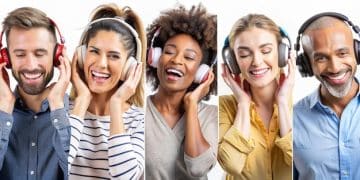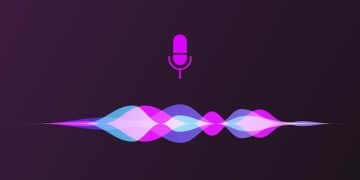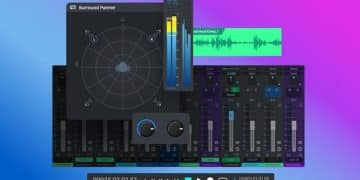Boost Podcast Reach: Master Accessibility for Interviews
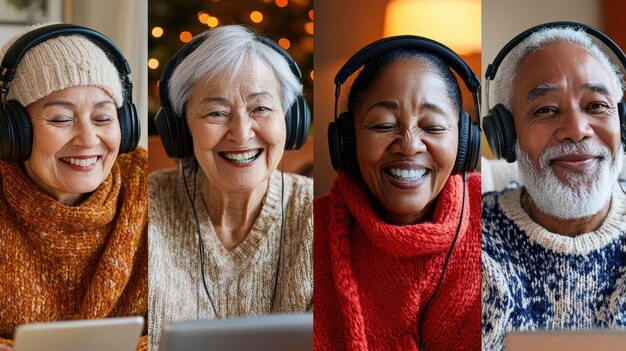
Enhancing podcast interview accessibility is crucial for expanding listener reach, ensuring diverse audiences can engage with your content regardless of their individual abilities or technological limitations.
In the evolving landscape of digital media, making your content accessible isn’t just a best practice—it’s a necessity. For podcasters, understanding and implementing strategies for Podcast Interview Accessibility: Ensure Your Content Reaches a Wider Audience means opening your work to a global community, fostering genuine inclusion and significantly expanding your listener base.
understanding the landscape of podcast accessibility
The digital age has ushered in an era where information is abundant, yet access to it remains uneven. When we talk about podcast accessibility, we’re addressing the design and delivery of audio content in a way that is consumable by as many people as possible, including those with disabilities. This isn’t just about compliance; it’s about empathetic content creation. The concept extends beyond simply adding captions; it delves into the very core of how we structure, produce, and distribute our podcast interviews to ensure no one is inadvertently excluded.
The barriers to content consumption can be varied. For individuals with hearing impairments, raw audio without a textual equivalent is simply inaccessible. Visually impaired listeners might struggle with interfaces that aren’t designed for screen readers. Cognitive disabilities can make complex linguistic structures or fast-paced dialogue challenging to process. Even those without diagnosed disabilities can benefit from accessibility features, such as non-native English speakers who rely on transcripts, or individuals in noisy environments who need captions. Recognizing these diverse needs is the first step toward effective implementation.
who benefits from enhanced accessibility?
It’s a common misconception that accessibility features solely target people with disabilities. While they are primary beneficiaries, the reality is far broader. Think about a commuter on a noisy train who can read a transcript, or a student reviewing an interview for a project who can quickly scan keyword-searchable text.
- Deaf and Hard-of-Hearing Communities: Transcripts and captions are indispensable for this group.
- Visually Impaired Listeners: Well-structured show notes and screen-reader-friendly platforms are key.
- Neurodiverse Individuals: Clear, concise language and structured content improve comprehension.
- Non-Native English Speakers: Transcripts aid in language learning and understanding nuances.
- Individuals in Noise-Sensitive Environments: Captions or transcripts allow silent consumption.
- SEO and Discoverability: Textual content is searchable by search engines, boosting reach.
Ultimately, prioritizing accessibility broadens your content’s appeal and utility. It demonstrates a commitment to your audience, valuing their ability to engage with your message regardless of personal circumstance. This inclusive approach not only strengthens your brand image but can also unlock new demographics of listeners who may have previously been unable to engage with your content. It’s an investment that pays dividends in both social impact and audience growth.
essential steps for transcript generation and implementation
For podcast interviews, transcripts are perhaps the single most impactful accessibility feature. They serve as a textual representation of every word spoken, fulfilling multiple needs simultaneously. Accuracy, however, is paramount. A poorly transcribed document can be more frustrating than no transcript at all, leading to misunderstandings and diminishing trust. Therefore, selecting the right tools and processes is crucial for high-quality output.
There are several options available for generating transcripts, ranging from automated services to human transcription. Automated tools offer speed and cost-effectiveness, often leveraging advanced AI to convert speech to text. However, they can struggle with accents, multiple speakers, and background noise, necessitating thorough manual review. Human transcription, while more expensive and time-consuming, generally provides superior accuracy, especially for complex or nuanced conversations. Many podcasters opt for a hybrid approach, using AI for the first pass and then hiring editors for refinement.
leveraging transcription services and tools
The market for transcription services has grown considerably, offering various tiers of quality and price points. Consider services that offer speaker differentiation, time stamps, and the ability to handle various audio qualities. Tools like Trint, Rev, Happy Scribe, and even YouTube’s automatic captioning (with heavy editing) are popular choices. Each has its strengths and weaknesses, so experimenting to find what best fits your budget and quality expectations is recommended.
Once you have a transcript, how you present it is just as important as its accuracy. It should be easily findable on your podcast website or platform. Embed it directly into the show notes where possible, or provide a clear link to a separate page. Ensure the text is readable, with good contrast, sufficient font size, and clear paragraph breaks. For longer interviews, add internal navigation like timestamps or topic headings to allow listeners to jump to specific sections. This improves usability and enhances the overall experience for anyone relying on the text.
The benefits of transcripts extend beyond pure accessibility. They act as a powerful SEO tool, making your audio content discoverable through text searches. Search engines can’t “listen” to your podcast, but they can index your transcripts, drawing in new listeners who might find your content through a blog post or an article search. Moreover, transcripts facilitate content repurposing, allowing you to easily extract quotes for social media, create blog posts, or even compile e-books from your interviews. This multifaceted utility makes transcription an indispensable part of modern podcast production.
closed captions and subtitles for visual learners
While transcripts offer a full textual record, closed captions and subtitles are essential for video podcasts or any visual component of your audio interviews. They allow audiences to follow along in real-time, whether due to hearing impairments, noisy environments, or simply a preference for visual reinforcement. The distinction between captions and subtitles is subtle but important: closed captions include non-speech elements like sound effects and speaker identification, making them ideal for the deaf and hard-of-hearing, while subtitles typically translate spoken dialogue only.
Generating accurate captions requires careful attention. Just like transcripts, automated systems can provide a starting point, but manual review is critical to correct errors and ensure synchronization with the audio. Many podcast platforms that support video, like YouTube, offer integrated captioning tools, but investing in dedicated captioning software or services can yield higher quality and more control. The goal is to create a seamless viewing experience where the text appears and disappears in perfect sync with the spoken words, enhancing comprehension rather than distracting from it.
integrating captions into your distribution strategy
When distributing your podcast interviews across video platforms, integrate captions natively. YouTube, Vimeo, and Facebook all support caption file uploads (.SRT or .VTT files). This not only makes your content accessible but also improves its visibility on these platforms, as captioned videos often rank higher in search results and have better engagement rates. Consider offering both open captions (burned into the video) and closed captions (toggleable by the viewer) to cater to different preferences.
Beyond formal captions, think about how you visually present your interviews. If you display speaker names on screen, ensure they are legible. Use contrasting colors for text and backgrounds. Avoid overly busy visual elements that might obscure captions or distract from the dialogue. For some, visual cues like a speaker’s body language can also aid comprehension, so ensure your visual presentation complements the audio, rather than competing with it. The combination of clear audio, accurate transcripts, and precisely timed captions creates a robust, accessible experience for every potential listener.
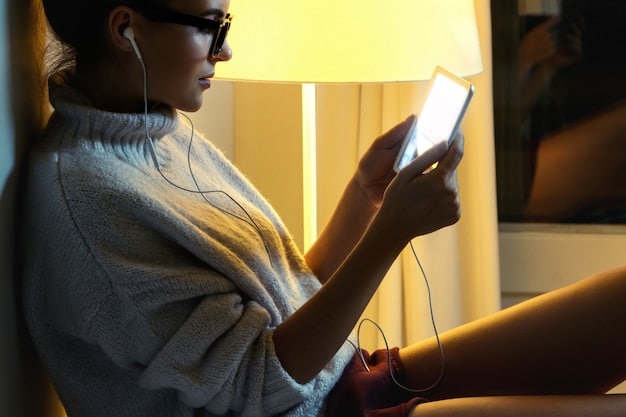
designing accessible podcast websites and show notes
The accessibility of your podcast content extends beyond the audio itself; it encompasses the entire ecosystem surrounding it, particularly your website and show notes. These elements serve as the primary gateways for listeners to discover, engage with, and access your interviews. A poorly designed website or unintuitive show notes can be just as much of a barrier as the lack of a transcript, potentially excluding a significant portion of your potential audience.
Your podcast website should adhere to web accessibility guidelines (WCAG standards). This means ensuring good color contrast for text, using clear and consistent navigation, and providing alternative text for all images. For visually impaired users relying on screen readers, the site structure needs to be logical, with proper use of headings (H1, H2, H3), semantic HTML, and ARIA attributes where necessary. Avoid complex animations or auto-playing media that can be disorienting or difficult to control. A clean, uncluttered design generally contributes to better accessibility and a more pleasant user experience for everyone.
optimizing show notes for accessibility and discoverability
Show notes are a vital component of your podcast. They’re not just a place for episode summaries; they’re an opportunity to enhance accessibility and SEO. Structure your show notes clearly with bullet points, numbered lists, and bold text to break up information. Include clickable timestamps that link to specific moments in the audio, allowing listeners to jump directly to relevant segments. This is especially helpful for long interviews or for those who wish to revisit a particular topic.
Furthermore, ensure your show notes include a concise summary of the interview’s key topics and any resources mentioned, such as guest websites, books, or articles. This text-based information is crucial for search engines to index your content, improving discoverability. For listeners with cognitive disabilities, clear and concise language in the show notes can provide a quick overview before they dive into the full audio. By making your website and show notes intuitive and informative, you create a truly inclusive environment where every listener can find what they need.
audio quality and clarity: the foundation of accessibility
While transcripts and captions are essential, the foundational layer of podcast accessibility begins with the audio itself. Poor audio quality—muffled speech, excessive background noise, inconsistent volume levels, or distorted sound—creates an immediate barrier for all listeners, not just those with hearing impairments. Even the most accurate transcript can’t fully compensate for indecipherable audio. Therefore, prioritizing clear and consistent sound is not merely about production value; it’s a critical accessibility consideration.
To achieve optimal audio clarity, several factors come into play. Microphone choice is paramount; investing in good quality microphones for both host and guests makes a significant difference. Proper microphone placement, typically close to the speaker’s mouth, helps capture clean audio and minimize room echo. Recording in a quiet environment, free from HVAC hums, street noise, or buzzing electronics, is equally important. Even subtle background noises can become magnified and distracting when listening through headphones.
post-production for enhanced clarity
The work doesn’t stop at recording. Post-production plays a crucial role in refining audio quality and boosting accessibility. This includes:
- Noise Reduction: Using audio editing software to reduce or eliminate distracting background noise.
- Equalization (EQ): Adjusting frequencies to make voices clearer and more present.
- Compression: Leveling out loud and soft passages to ensure consistent volume. This prevents listeners from constantly adjusting their volume controls.
- De-essing: Reducing harsh “s” sounds that can be jarring.
- Pacing and Pauses: Ensuring speakers maintain a clear, understandable pace. Encouraging deliberate pauses during an interview can also aid comprehension.
- Avoiding Overlapping Talk: While natural in conversation, excessive overlapping makes transcription difficult and can be confusing for listeners.
Ultimately, great audio quality demonstrates respect for your audience. It shows that you’ve put in the effort to make your content enjoyable and understandable by everyone, regardless of their listening environment or personal hearing capabilities. It creates a more pleasant and less fatiguing listening experience, ensuring your message is heard and absorbed as intended.
inclusive interview practices for Diverse Voices
Accessibility in podcast interviews extends beyond the technical aspects of audio and text; it deeply involves the human element. An inclusive approach means considering not only how content is delivered but also whose voices are amplified and how they are presented. Inviting a diverse range of guests—spanning different backgrounds, experiences, abilities, and perspectives—not only enriches your content but also inherently makes it more relatable and accessible to a wider audience. Representation matters, and your guest selection is a powerful statement.
When conducting interviews, mindful communication practices are key. Encourage guests to speak clearly, at a moderate pace, and to avoid jargon or explain technical terms where necessary. If a guest has a speech impediment or a less common accent, do not shy away from featuring them; instead, ensure your commitment to high-quality transcription and careful editing can support their valuable contribution. Consider asking guests if they have any specific needs or preferences regarding the interview format or questions. A pre-interview conversation can help identify any potential barriers and allow you to make adjustments.
fostering an environment of understanding
Creating an inclusive interview environment also means being aware of implicit biases and assumptions. Avoid making assumptions about your guest’s background or abilities. Instead, focus on their expertise and unique insights. This also involves empathetic listening during the interview, allowing guests ample time to articulate their thoughts without interruption.
- Clear Introductions: Introduce guests and topics clearly at the beginning of each episode.
- Thoughtful Questioning: Craft questions that elicit clear and comprehensive answers, avoiding leading or overly complex questions.
- Tone and Language: Maintain a respectful, welcoming, and professional tone. Be mindful of the language used, avoiding ableist terms or discriminatory phrases.
- Patience and Empathy: Understand that not everyone communicates in the same way. Be patient with pauses and allow guests to express themselves fully.
- Accessibility Checklists: Before and after recording, run through a mental or physical checklist to ensure basic accessibility measures are met for each interview.
By actively embracing diversity in your guest selection and refining your interview practices to be more considerate and accommodating, you don’t just produce a more accessible podcast; you create a more powerful and resonant one. Such an approach fosters a community where different voices are not only heard but also genuinely understood and valued. This commitment transforms your podcast into a platform that truly serves and reflects the multifaceted experiences of its global audience.
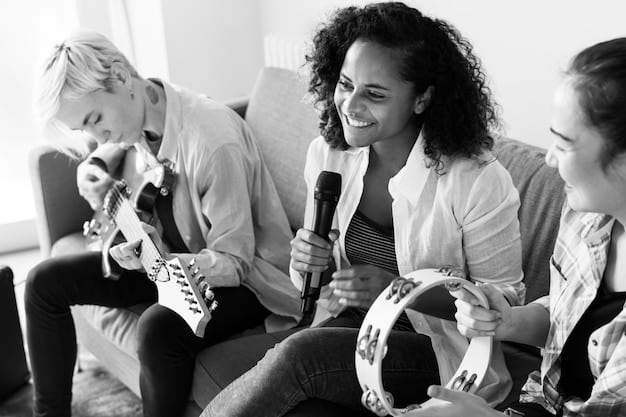
future-proofing your podcast with emerging technologies
The landscape of accessibility is continuously evolving, driven by advancements in technology. For podcasters committed to reaching a wider audience, staying abreast of these emerging technologies is not just an advantage; it’s a necessity. From AI-powered translation to advanced voice recognition and haptic feedback systems, new tools are constantly being developed that promise to further break down barriers to content consumption. Embracing these innovations can significantly enhance the accessibility and global reach of your podcast interviews.
One area of rapid development is real-time transcription and translation. While still in nascent stages for perfect accuracy, tools that can provide on-the-fly captions or even translate spoken words into multiple languages open up immense possibilities. Imagine a listener in Japan being able to experience your English interview with simultaneous Japanese subtitles, or a hearing-impaired individual following a live podcast with instantly generated closed captions. These advancements hint at a future where language and hearing barriers are significantly minimized, allowing for truly global content consumption.
exploring innovative accessibility features
Beyond transcription and translation, consider other technological innovations that could benefit your audience:
- Interactive Transcripts: Transcripts that highlight words as they are spoken, allowing users to click a word and jump to that point in the audio.
- Sign Language Interpretation (for video podcasts): While costly, this would be a monumental step for the deaf community. AI advancements might make this more scalable in the future.
- Accessibility Widgets: Tools that can be embedded on your website, allowing users to customize their viewing/listening experience (e.g., text size, contrast, dyslexia-friendly fonts).
- Voice Control Navigation: Ensuring your podcast player or website can be navigated using voice commands for those with motor impairments.
- Audio Descriptions: For video podcasts, providing a separate audio track that describes visual elements for visually impaired viewers.
The key is to remain adaptable and curious. Regularly review new accessibility tools and features that become available in your podcasting software, hosting platform, or on third-party services. Attend webinars or conferences focused on digital accessibility. By proactively engaging with these emerging technologies, you not only comply with current accessibility standards but also future-proof your content, ensuring your podcast interviews remain inclusive and accessible to the broadest possible audience for years to come. This forward-thinking approach will solidify your position as a leader in empathetic and impactful content creation.
| Key Aspect | Brief Description |
|---|---|
| 📝 Transcripts | Essential for hearing-impaired users and SEO; enables content repurposing. |
| 👁️ Captions | Crucial for video versions, aiding those in noisy environments or with hearing loss. |
| 🎧 Audio Clarity | Fundamental for all listeners; encompasses recording quality and post-production. |
| 🌐 Web Design | Ensure your website and show notes follow WCAG guidelines for universal access. |
FAQ: commonly asked questions about podcast interview accessibility
▼
Accessibility is important not just for legal compliance, but for expanding your audience reach significantly. It includes individuals with disabilities, non-native speakers, and those in noisy environments, making your content usable for a wider demographic. It demonstrates inclusivity and strengthens your brand’s reputation.
▼
Transcripts are full textual records of everything spoken in an audio or video file, typically provided as a separate document. Closed captions are synced text displayed on-screen in real-time, appearing and disappearing with the audio, and usually include non-speech elements like sound effects for deaf or hard-of-hearing viewers.
▼
To ensure your website is accessible, follow Web Content Accessibility Guidelines (WCAG). This includes using clear navigation, sufficient color contrast, alternative text for images, and proper heading structures. Test your site with screen readers to identify and fix potential barriers for visually impaired users.
▼
Yes, significantly. Providing transcripts allows search engines to index your audio content, as they primarily crawl text. This makes your interviews discoverable through keyword searches, driving organic traffic to your podcast and increasing its overall visibility and reach.
▼
Key audio quality tips include using high-quality microphones, recording in quiet environments to minimize background noise, and performing careful post-production (noise reduction, EQ, compression). Clear, consistent audio prevents listener fatigue and ensures your message is easily understood by everyone.
conclusion: building a universally welcoming podcast
Embracing accessibility in podcast interviews is far more than a checkbox exercise or a nod to compliance; it is a fundamental shift towards more empathetic and effective communication. By thoughtfully implementing strategies for transcripts, captions, pristine audio quality, and inclusive design, podcasters can ensure their valuable content genuinely resonates with and is consumable by the broadest possible audience. This commitment not only opens doors for individuals who might otherwise be excluded but also strengthens your podcast’s reach, relevance, and impact in an increasingly interconnected world. The future of podcasting is inherently inclusive, and those who lead with accessibility will undoubtedly foster the most engaged and loyal communities.

